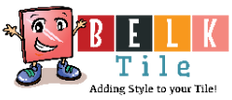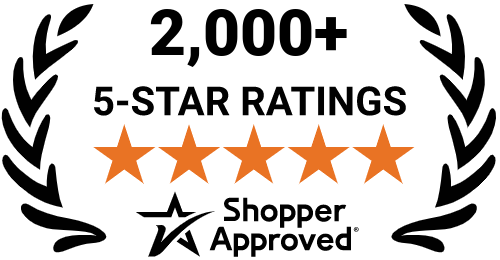Chevron Pattern vs Herringbone Pattern: Key Differences.
Posted by Mike Belk on Jul 20, 2024

Patterns are key in interior design, adding texture and beauty to any space. The chevron and herringbone patterns are top choices. They look similar but have big differences in how they're made and how they look. It's important to know these differences before picking a design.
The chevron pattern has a long history, from ancient Greek pottery to medieval heraldry. It's made by cutting boards at an angle for a 'V' shape. On the other hand, the herringbone pattern goes back to the Roman Empire, Egypt, and Italy. It uses rectangular planks laid at 90 degrees, making a zig-zag look.
These patterns are found in many parts of culture, like textiles, jewelry, and furniture. Today, they're used in building and decorating, offering endless ways to make spaces look dynamic and luxurious.
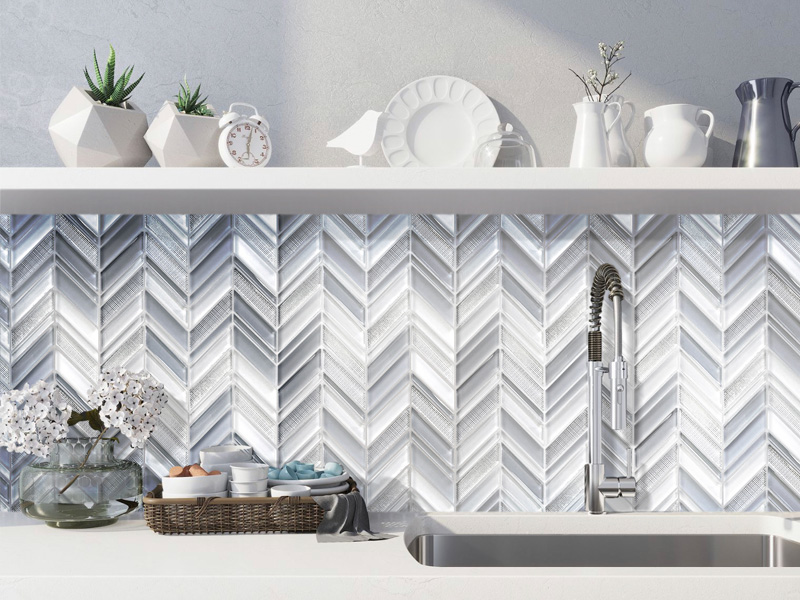
Key Takeaways
- The chevron pattern forms a continuous 'V' shape, while the herringbone pattern features a broken zig-zag.
- Herringbone traces back to ancient civilizations, while chevron gained popularity in the European Renaissance.
- Both patterns are used in high-end properties and luxury homes.
- Chevron patterns create a sense of movement and flow but can be challenging to install.
- The cost difference between chevron and herringbone patterns may not be significant.
Introduction to Chevron and Herringbone Patterns
Chevron pattern design and herringbone pattern tile are top picks for interior decor. They add a unique look to floors and backsplashes. Each pattern brings its own special touch to a space.
The chevron pattern design features a V-shape made by placing two identical tiles point to point. This zigzag pattern was popularized by fashion designers in the 1950s and 1960s. It creates a dynamic flow that catches the eye.
Herringbone pattern tile uses equal-size rectangles in a zig-zag design. It looks like the bones of a herring fish. This pattern is modern and balanced, offering a sophisticated look. The layout of herringbone can change based on the tile size.
Looking at the chevron and herringbone difference, installation complexity is another factor. Chevron floors need professional skill and are installed at 45° or 60° angles. This makes them more challenging and costly than herringbone floors, which are installed at 90°.
| Feature | Chevron Pattern | Herringbone Pattern |
|---|---|---|
| Design | V-shape, symmetrical zigzag | Staggered zigzag resembling fish bones |
| Installation Angle | 45° or 60° | |
| Visual Impact | Dynamic and continuous flow | Balanced and elegant composition |
| Cost | Higher due to labor intensity | Moderate |
Both patterns can make spaces look amazing. They boost the design of any area.
Historical Background of Chevron and Herringbone Patterns
The history of chevron and herringbone patterns goes way back to ancient times. These patterns have been loved for their beauty and flexibility in many settings.
Ancient Origins
In the Ancient Roman Empire, the herringbone pattern was used for roads. These roads were known for their smart design. This pattern also made its way to other ancient places like Egypt and North America, showing its big impact.
The chevron pattern comes from Medieval times and ancient Greece. It was seen in fabrics and other materials, proving its lasting popularity.
European Influence
In the 16th century, herringbone patterns became popular for wood floors in Europe. The Chateau de Fontainebleau in France is a great example of this. The detailed wood floors in these places helped make these patterns famous in European design.
The chevron pattern, with its sharp angles, was big in Medieval times and European design. You can still see it in old buildings and textiles across Europe.
Modern Applications
Today, chevron and herringbone patterns are still in style. Chevron's 45-degree cuts give a modern look, especially for stylish wood floors.
Herringbone patterns give a traditional feel, inspired by ancient Roman roads. Parquet wood flooring became popular again in the 1930s, then again in the 1980s when people rediscovered its beauty.
Now, you can find many hardwood options, including chevron and herringbone pieces. These classic patterns can be added to modern homes. With the right care, they can stay beautiful for many years, making them a favorite in both old and new homes.
The Geometry Behind Chevron and Herringbone Designs
Let's dive into the world of Chevron and Herringbone designs. These patterns are loved for their clean lines and unique zigzag look. Chevron designs use diagonal cuts to create a sharp point, forming Vs or arrows. This requires precise cuts for a smooth look, making Chevron more expensive to install.
Herringbone patterns use rectangular tiles that overlap in a zigzag way. This design looks like a fishbone, giving it a unique name. It adds depth and texture to any space. Installing Herringbone needs a skilled hand for perfect angles.
Today, Chevron and Herringbone are not just for floors. They're used in backsplashes, walls, and even fabrics. These patterns are versatile and always in style. They add a personal touch to any room with their unique look.
Creating these patterns needs precise geometry and skill. Chevron and Herringbone show how math and design come together beautifully. They're top choices in interior design for their detailed beauty. Mastering these patterns requires not just skill but a deep understanding of the interplay between angles and spatial layout.
Key Differences between Chevron and Herringbone Patterns
When looking at chevron pattern flooring and herringbone designs, it's key to see how they differ. Their shapes and looks are unique. This affects how they change a room's look and feel.
Structure and Layout
Chevron pattern flooring uses planks cut at a 45-degree angle for a V shape. This makes the floor look sleek and elegant. Herringbone, on the other hand, cuts planks at a 90-degree angle. This creates a classic zigzag look.
This difference changes how easy it is to install and the final look of the floor.
Visual Movement
The way these patterns look is another big difference. Chevron patterns seem to move smoothly, thanks to the V shapes. You can make this effect even stronger by changing the plank angles.
This adds a sense of movement and makes the room look lively. Herringbone patterns, however, have a more geometric look. They use uniform pieces in zigzag patterns.
Applications in Interior Design
Both patterns fit well in many interior styles. Chevron is often seen in classic or traditional rooms, giving a refined look. Herringbone is more flexible and popular in both old and new, fancy homes.
These patterns bring depth and interest to simple or detailed rooms. They make a big difference in how a space looks.
Chevron Pattern Characteristics
Chevron floors stand out with their unique V-shaped pattern. The planks end at an angle, creating a continuous zigzag. This design brings a dynamic feel to any room, making it a bold choice for interior design.
Design Elements
The zigzag pattern of Chevron floors is eye-catching. From different angles, it looks like V, M, or W shapes. It has fewer seams than herringbone, giving a dramatic look. This design makes any space lively and perfect for focusing on.
Material Choices
Chevron floors come in many materials for different styles and needs. Classic hardwoods like oak or walnut give a timeless look. Engineered wood is better for wet areas like kitchens or bathrooms because it resists moisture. Modern options like marble and glass mosaics add elegance to walls and backsplashes.
| Material | Description | Ideal Spaces |
|---|---|---|
| Hardwood | Classic, durable options like oak or walnut | Living rooms, hallways |
| Engineered Wood | Moisture-resistant, stable in kitchens and bathrooms | Bathrooms, kitchens |
| Marble | Luxurious, high-end appearance | Entryways, accent walls |
| Glass | Reflective, bright, and modern | Backsplashes, shower walls |
Installation Tips
Installing Chevron floors needs careful planning. Cutting and aligning the boards right is key. Boards must be cut at exact angles for a perfect V-shaped pattern.
It's smart to plan the layout first to avoid waste and get a smooth install. Choosing the right adhesives and making sure the subfloor is even and clean will help keep the floors looking great for a long time.
Herringbone Pattern Characteristics
Herringbone floors have a long history, dating back over two thousand years. They were first seen in places like the Chateau de Fontainebleau in France in 1539. These floors are known for their versatility and intricate design. They are made of rectangular planks laid at a 90° angle, creating a zigzag pattern.
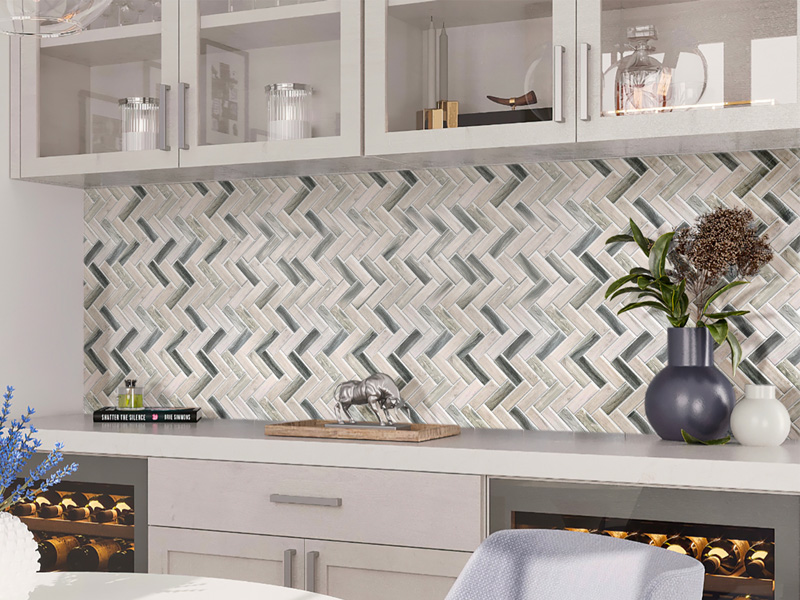
This unique layout adds texture and depth, making herringbone floors popular in homes and businesses. In small areas, the design can make rooms look bigger. Unlike Chevron patterns, herringbone floors have rectangular pieces laid out perpendicularly.
Herringbone floors can be made from solid or engineered hardwood. This makes them durable for busy areas and suitable for moist places like basements or kitchens. Using engineered wood in these areas helps. These floors turn any space into a stylish and elegant area.
Herringbone floors have a high-end look that is calming and sophisticated. The design creates an optical illusion, blending historical charm with modern style. The detail in making these floors can make them more expensive, showing their luxury.
You can customize herringbone floors by changing the plank size and color. This lets you create a unique look. Adding these floors brings elegance and a complex visual feast to any room.
| Aspect | Herringbone | Chevron |
|---|---|---|
| Design | Rectangular planks at 90° angles | Planks meeting at 45° angles |
| Pattern | Zigzag, intricate design | V-shaped, repetitive layout |
| Visual Effect | Makes small spaces appear larger | Energy and expansive feel |
| Materials | Solid and engineered hardwood | Solid and engineered hardwood |
| Installation Cost | High due to intricate layout | Higher due to precise cuts |
Choosing Between Chevron and Herringbone for Flooring
Choosing between Chevron and Herringbone patterns can change how a room looks. Both patterns can make your home look better, but think about what you want. You should consider a few things before making a decision.
Room Size and Layout Considerations
Knowing your room's layout is key when picking a pattern. Chevron works well in big rooms, making them look bigger and more lively. Herringbone is great for small rooms, making them seem larger and more striking.
Choosing the right plank length is also important. It affects how the room looks. The right size can make your room look better.
Material Durability
The materials for Chevron and Herringbone patterns matter a lot. Solid hardwood is very durable, but engineered wood is also strong and stable. Both options last a long time and look good.
But, think about the specific needs of each pattern. Herringbone might use more material because of its cuts. Chevron needs careful installation to look right.
Cost and Installation
Thinking about your budget is important when choosing flooring. Chevron can be more expensive because of its cuts and installation. Herringbone is less costly in materials but might be pricier to install.
Consider these factors – room size, material strength, and cost – to pick the best flooring. This will help you find a pattern that looks good and is practical for your home.
- Chevron's dynamic angles suit spacious areas
- Herringbone enhances smaller rooms
- Solid hardwood vs engineered wood for durability
- Chevron's intricate cuts higher installation costs
Whether you choose Herringbone's classic look or Chevron's bold style, both patterns add beauty and strength to your home.
Chevron Pattern in Tile and Backsplash Designs
The chevron pattern is a symmetrical 'V' shape, perfect for modern spaces. It's been around since the Neolithic age, adorning pottery and military gear.
Today, it's popular in kitchens and bathrooms. You'll see it in ceramic wall tile, polished marble mosaic tile, and even glass mosaic. These materials give a sleek, stylish look that stands out without taking over the space.
This pattern makes rooms look bigger, which is great for small spaces. The zigzag design from diagonally cut tiles creates a dynamic look. It's both practical and stylish for anyone designing or decorating.
It's often used in kitchen backsplashes and bathroom walls. It adds elegance and makes a statement. Plus, it can be mixed with different materials. For instance, combining polished marble mosaic tile with ceramic creates a luxurious look that boosts the modern feel of a room.
The chevron pattern is versatile in design and installation. You can pick between matte and glossy finishes to fit your decor. With colors like Calacatta Gold and Thassos White Marble, there's a match for any color scheme.
Here's a look at the materials and their traits in chevron pattern tile designs:
| Material | Characteristics |
|---|---|
| Ceramic Wall Tile | Durable, versatile, and available in various colors and finishes. |
| Polished Marble Mosaic Tile | Luxurious look, smooth surface, and enhanced aesthetic appeal. |
| Glass Mosaic Tile | Reflective, modern, and perfect for adding depth and light to spaces. |
The chevron pattern remains a top choice for modern spaces. It shows how classic designs can fit today's styles.
Herringbone Pattern in Tile and Backsplash Designs
The herringbone pattern is a top choice for tiles and backsplashes. It's known for its elegant and flexible look in interior design. Tiles are laid at a 90-degree angle in a zig-zag pattern, making it stylish and sophisticated.
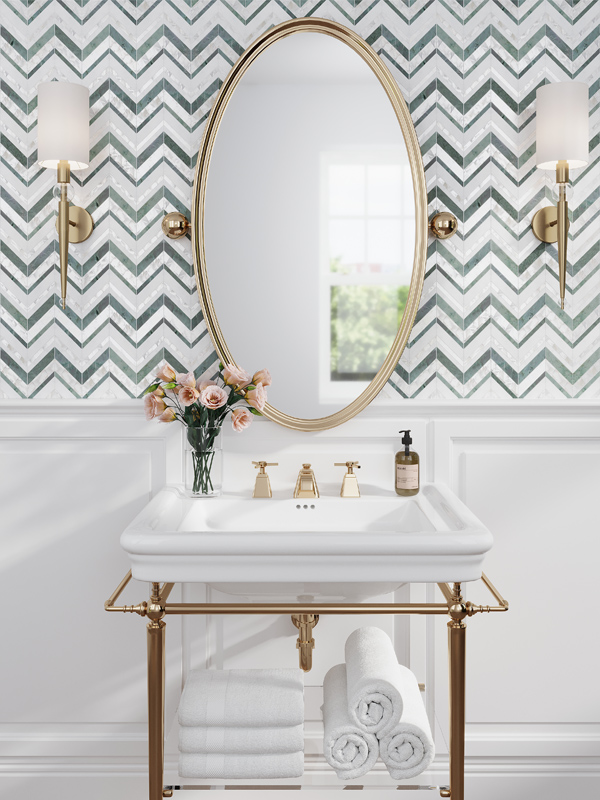
Visual Impact
A herringbone pattern has a big visual impact, giving a balanced and modern look. It works well with different tile sizes and materials, including limestone mosaic. This makes it perfect for various designs, especially in bathrooms and shower walls.
Matching Colors and Materials
Picking the right colors and materials is key to the herringbone pattern's beauty. Matching the tiles' shades can make the design pop, whether you choose a simple color scheme or a bold mix. Marble and limestone mosaic are great choices, adding luxury to bathroom backsplashes and shower walls.
| Aspect | Herringbone Pattern | Chevron Pattern |
|---|---|---|
| Angle | 90 degrees | 45 degrees |
| Installation | Popular DIY choice | Requires professional installation |
| Common Applications | Kitchen backsplashes, floors | Backsplashes, accent walls |
| Material Options | Ceramic, limestone, marble | Ceramic, glass, stone |
| Visual Style | Balanced, elegant, urban | Bold, stylish, retro |
Customizing Chevron and Herringbone Patterns
Personalizing Chevron and Herringbone patterns brings unique flooring solutions for different tastes. These patterns are great for aesthetic customization, offering many design options.
A tailored design approach includes:
- Varying the plank dimensions
- Choosing contrasting wood stains
- Incorporating mixed hardwoods for added depth and character
Chevron patterns have a classic V-shaped design. Designers can adjust the angles and lengths of the planks for a precise, geometric look. This look is both timeless and modern. However, the angled cuts make installation harder and more expensive.
Herringbone patterns feature interlocking rectangular designs. This allows for endless aesthetic customization. You can use straight edges for simpler installation or vary plank sizes for a more dynamic look. This pattern has been popular since the 16th century in Europe and is still loved today.
Here's a look at how you can customize Chevron and Herringbone patterns:
| Customization Aspect | Chevron Pattern | Herringbone Pattern |
|---|---|---|
| Plank Dimensions | Adjustable angles and lengths | Interlocking with varied widths and lengths |
| Wood Stains | Broad range with contrasting options | Diverse shades for depth and character |
| Design Complexity | Requires precise angled cuts | Straight-edge cuts for interlocking |
| Installation Time | Lengthier due to precision cuts | Moderate, depends on plank variety used |
Chevron and Herringbone patterns add timeless elegance and a unique flooring solution to any space. They're perfect for urban lofts, basement flats, or as dramatic features. The endless options mean you can create a tailored design that suits your taste.
Aesthetic Appeal: Chevron vs Herringbone Patterns
Choosing between the dynamic chevron and elegant herringbone patterns can change the look of a room. Each style has its own unique charm that affects interior design trends. The right choice can make a space feel more lively or timeless.
Bold and Dynamic Chevron
The dynamic chevron pattern is known for its bold, sharp lines. These lines create a lively and upscale feel. Boards are arranged in V-shapes, often at 60 to 90 degrees angles.
This design is perfect for modern and avant-garde looks. It adds a dramatic touch to any room, making it sophisticated yet vibrant.
Elegant and Timeless Herringbone
The elegant herringbone pattern has a timeless beauty. It's a classic choice for vintage-inspired interiors. The boards are arranged in a staggered pattern, meeting at 45-degree angles.
This creates a subtle, textured look. It suggests depth and dimension, highlighting craftsmanship and refined style.
Herringbone patterns have been popular for centuries. They've been found in ancient Egyptian artifacts and European designs from the medieval to Renaissance periods. This shows their lasting beauty and sophistication.
When choosing between the dynamic chevron and elegant herringbone, think about the style you want. If you prefer modern and bold, go for the chevron. For a timeless look, choose herringbone. Both patterns can enhance any room beautifully.
Conclusion
Choosing between the chevron and herringbone patterns is key in interior design. Each pattern has its own look and benefits. Chevron patterns give a modern feel with sharp angles and a big visual impact. Herringbone patterns, on the other hand, offer a timeless beauty and detailed look without the need for sharp cuts.
The choice often depends on factors like installation difficulty, cost, and the mood you want to create. Chevron flooring is more complex to install and costs more in labor. Herringbone flooring is easier and cheaper but still keeps its classic look and flexibility. Both patterns can be statement pieces in a room, but chevron is great for eye-catching areas. Herringbone adds a touch of class with its traditional layout.
When deciding, think about the size of the room, its layout, and your budget. Getting advice from professionals and comparing prices can help. This way, you pick a pattern that fits your design style and budget. No matter what you choose, both patterns will make your home look better.
FAQ
What is the main difference between chevron and herringbone patterns?
Chevron patterns have boards cut at an angle for a 'V' shape. Herringbone uses rectangular planks at 90 degrees for a zigzag look. Chevron gives a dynamic flow, while herringbone adds balance and sophistication.
What are the historical origins of the chevron and herringbone patterns?
Chevron patterns go back to ancient Greece and medieval times. Herringbone comes from Ancient Rome's infrastructure and has been in use for centuries in jewelry, textiles, and architecture. Both patterns have a long history.
How do chevron and herringbone affect the visual movement in a space?
Chevron patterns make the eye move along the floor with their 'V' shapes. Herringbone's zigzag adds texture and depth, giving a balanced look.
What materials are commonly used for chevron and herringbone flooring?
Chevron flooring uses traditional hardwoods or engineered woods cut at angles. Herringbone flooring has rectangular planks of hardwood or other materials laid at 90-degree angles for a staggered look.
How does room size influence the choice between chevron and herringbone patterns?
Chevron is great for large areas, creating a lively feel. Herringbone makes small rooms look bigger and more detailed with its texture and depth.
Are there differences in installation costs between chevron and herringbone patterns?
Yes, there are differences. Chevron needs precise cuts and alignment, which can be costly. Herringbone is simpler to install, making it cheaper than chevron.
How can chevron and herringbone patterns be customized for unique designs?
You can change plank sizes, use different wood stains, or mix hardwoods. These options let you create unique patterns that match your style and decor.
What types of spaces are best suited for chevron and herringbone patterns?
Chevron is perfect for modern spaces with its bold angles. Herringbone is great for classic settings, adding timeless elegance.
